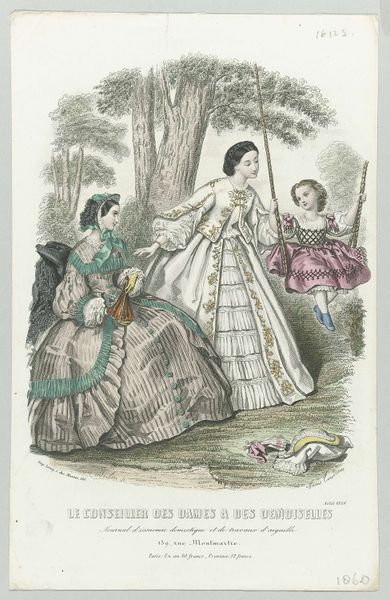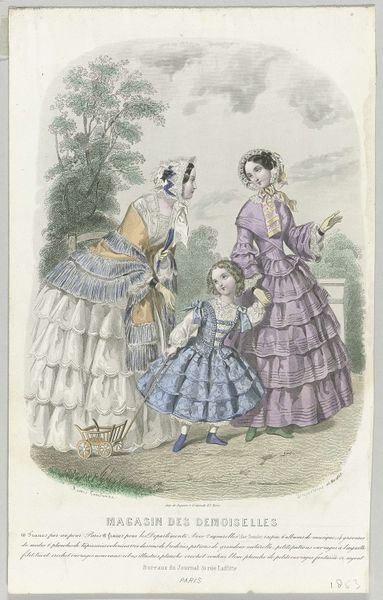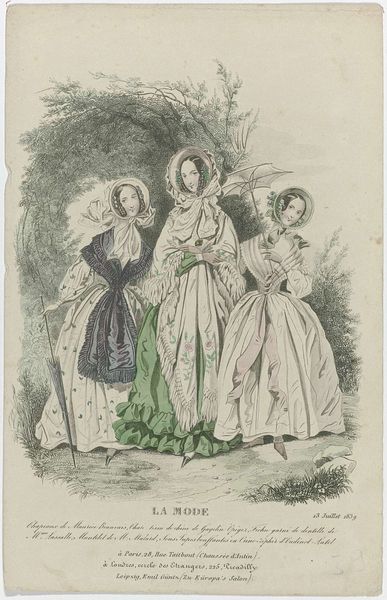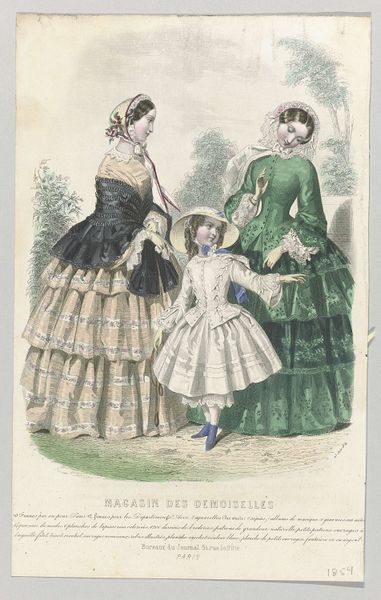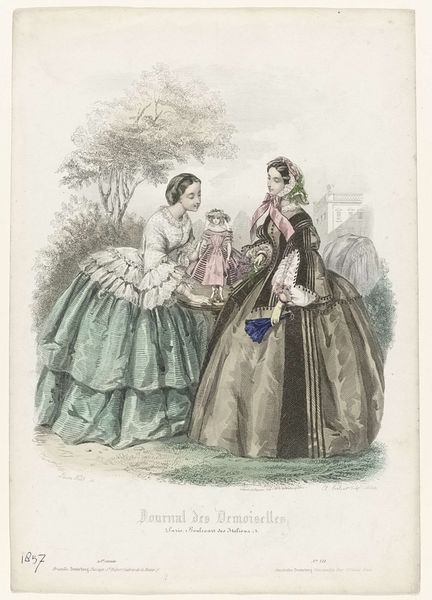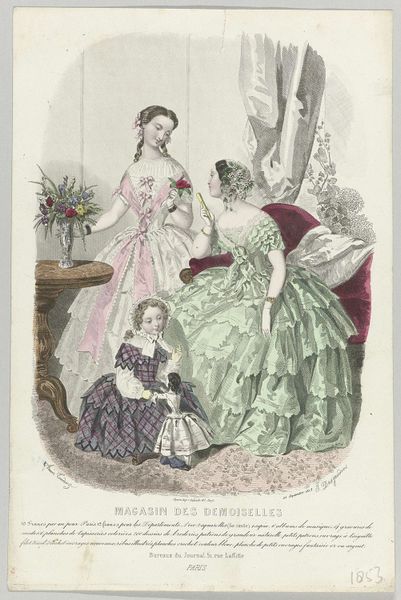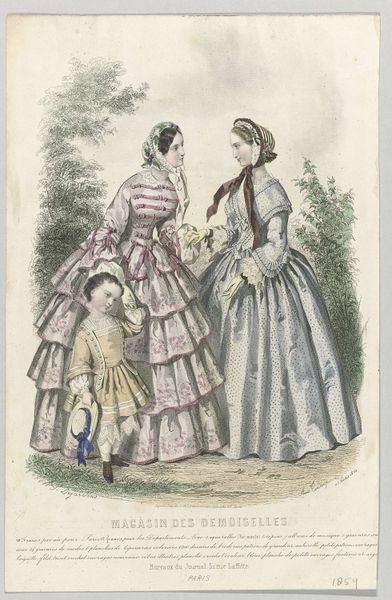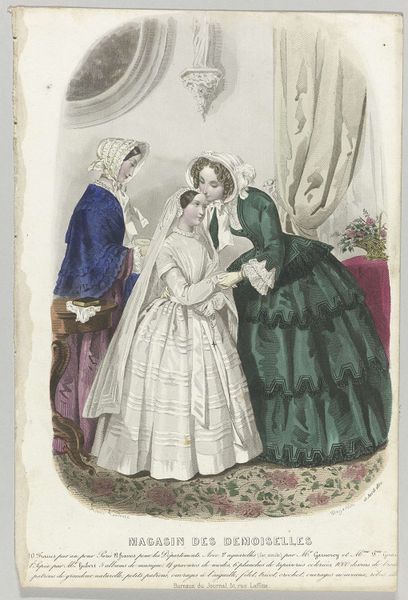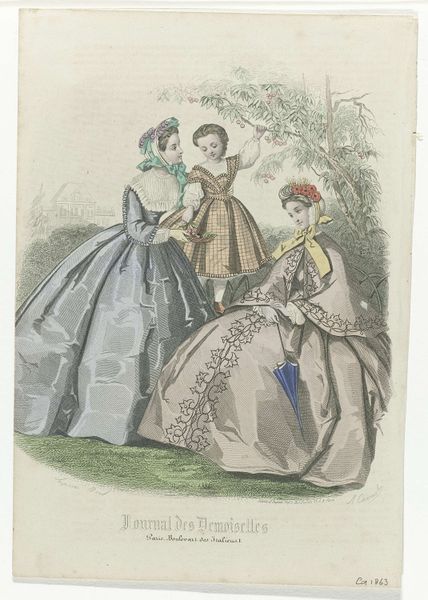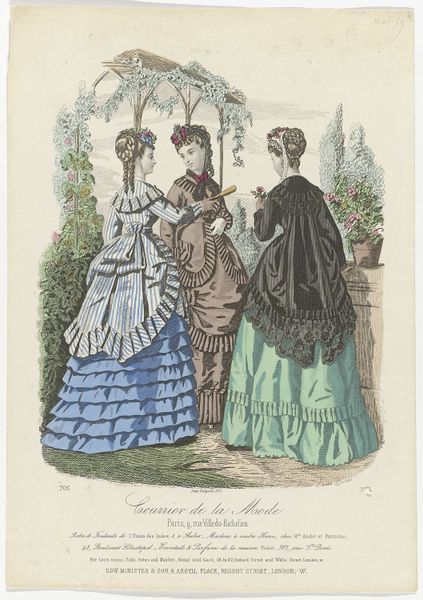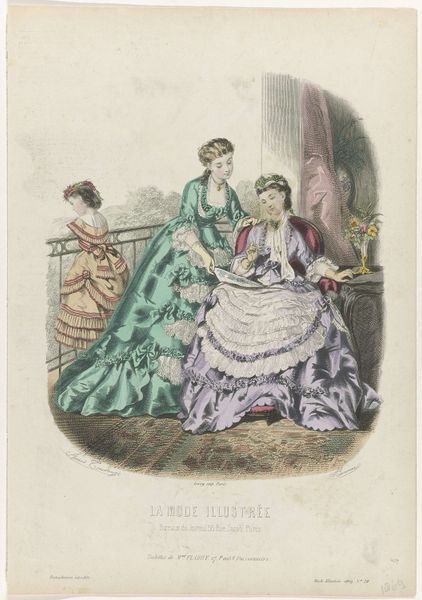
Dimensions: height 261 mm, width 178 mm
Copyright: Rijks Museum: Open Domain
This fashion plate, Le Magasin des Familles, was made around 1852 by Louis Berlier, and consists of paper and ink. It would have been printed using lithography, a relatively new technology at the time. This process allowed for the mass production of images, making fashion accessible to a wider audience. The image shows three figures wearing the latest styles. These clothes were made from fabrics like cotton and silk. They required a lot of labour in the production process, from growing the raw materials to spinning, weaving, dyeing and sewing. Each stage was subject to industrial developments, with new machinery accelerating production in factories. Fashion plates like this one reflect the rise of consumer culture in the 19th century. They promoted not only specific garments but also an entire lifestyle. They served as a powerful tool for shaping desires and driving the market for manufactured goods. By considering the materials, making, and context of this image, we can better understand its meaning and significance. It is more than just a pretty picture. It reflects the complex relationships between art, commerce, and society.
Comments
No comments
Be the first to comment and join the conversation on the ultimate creative platform.

